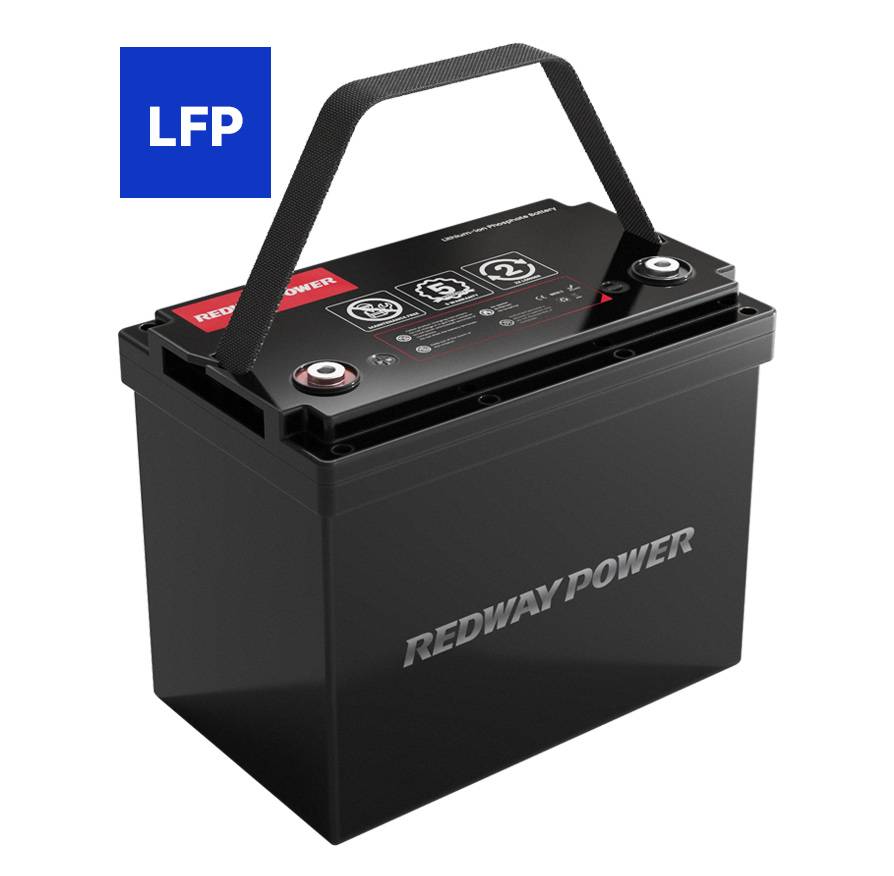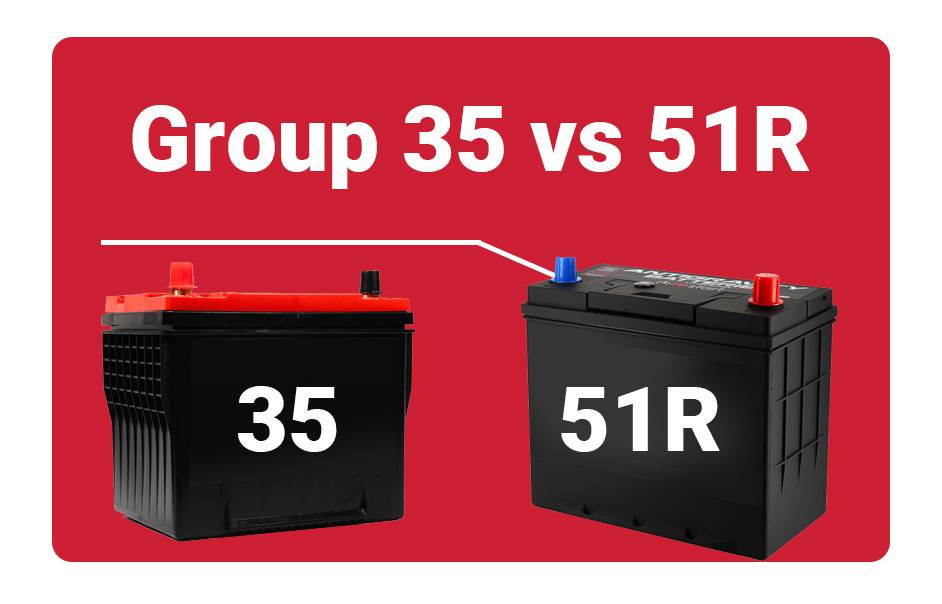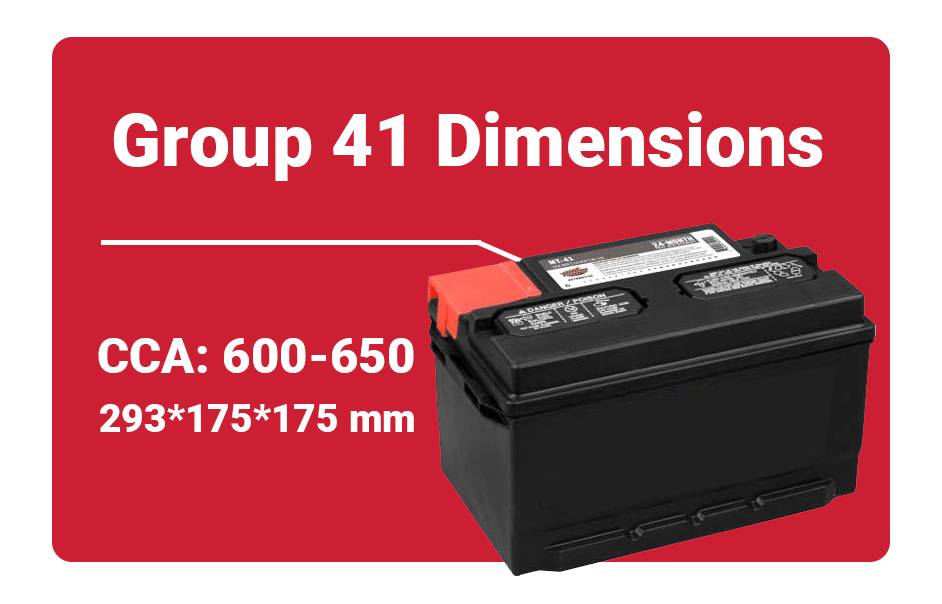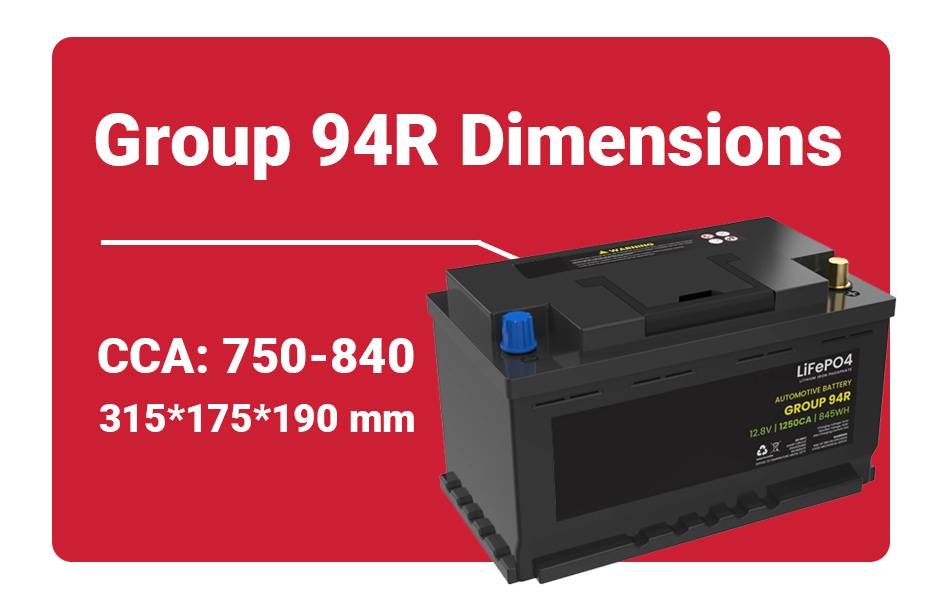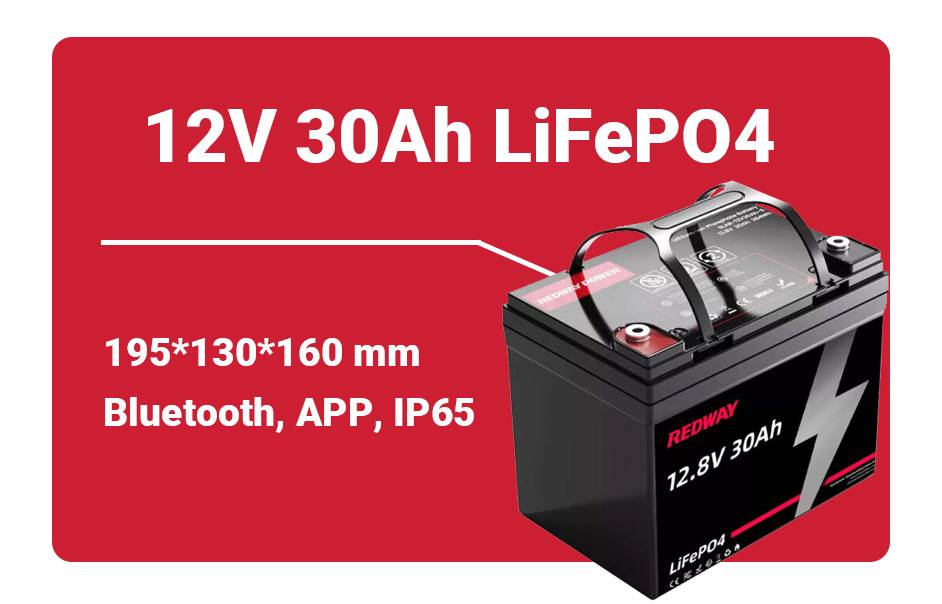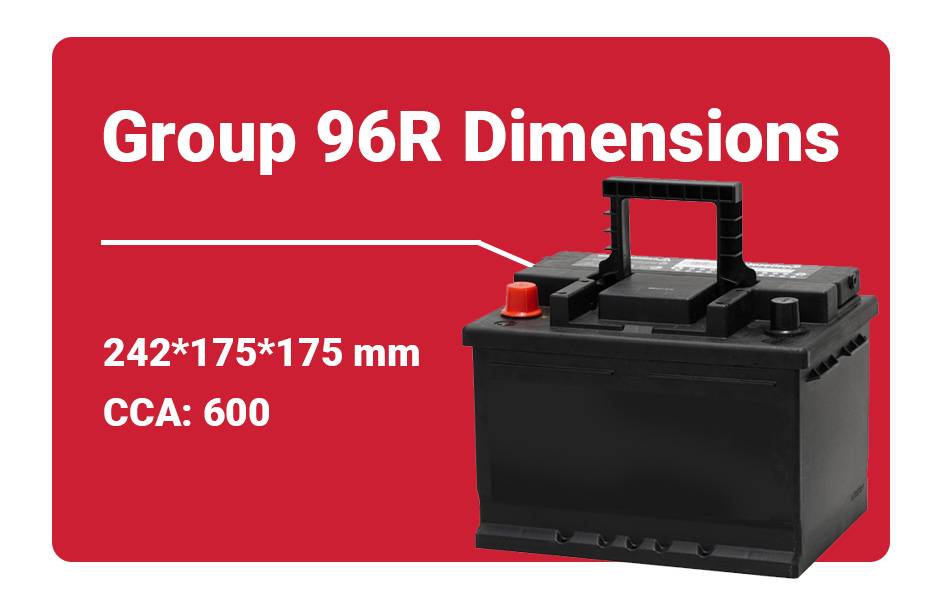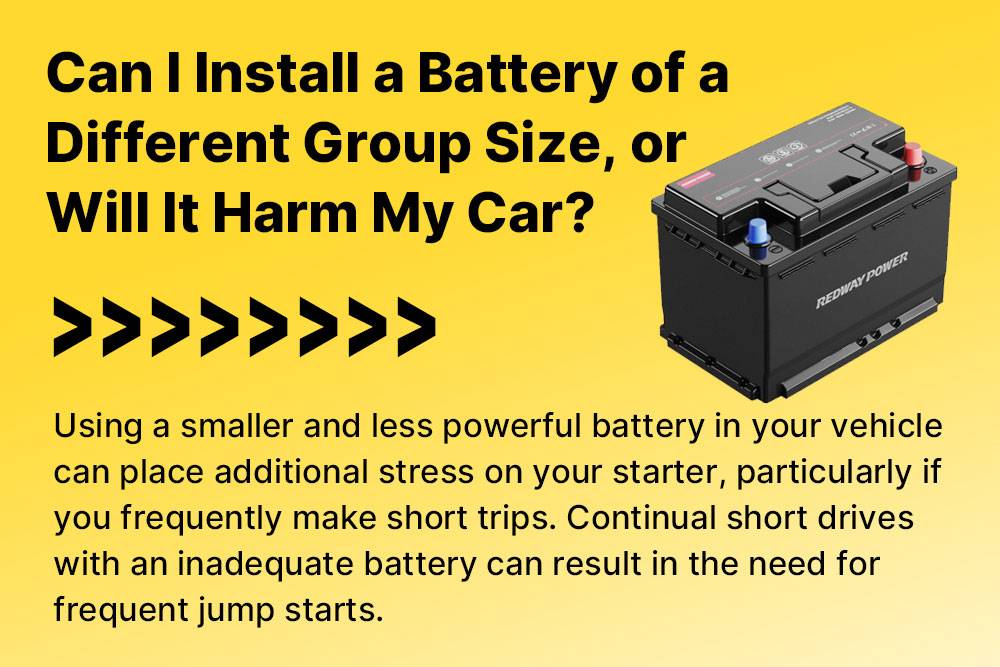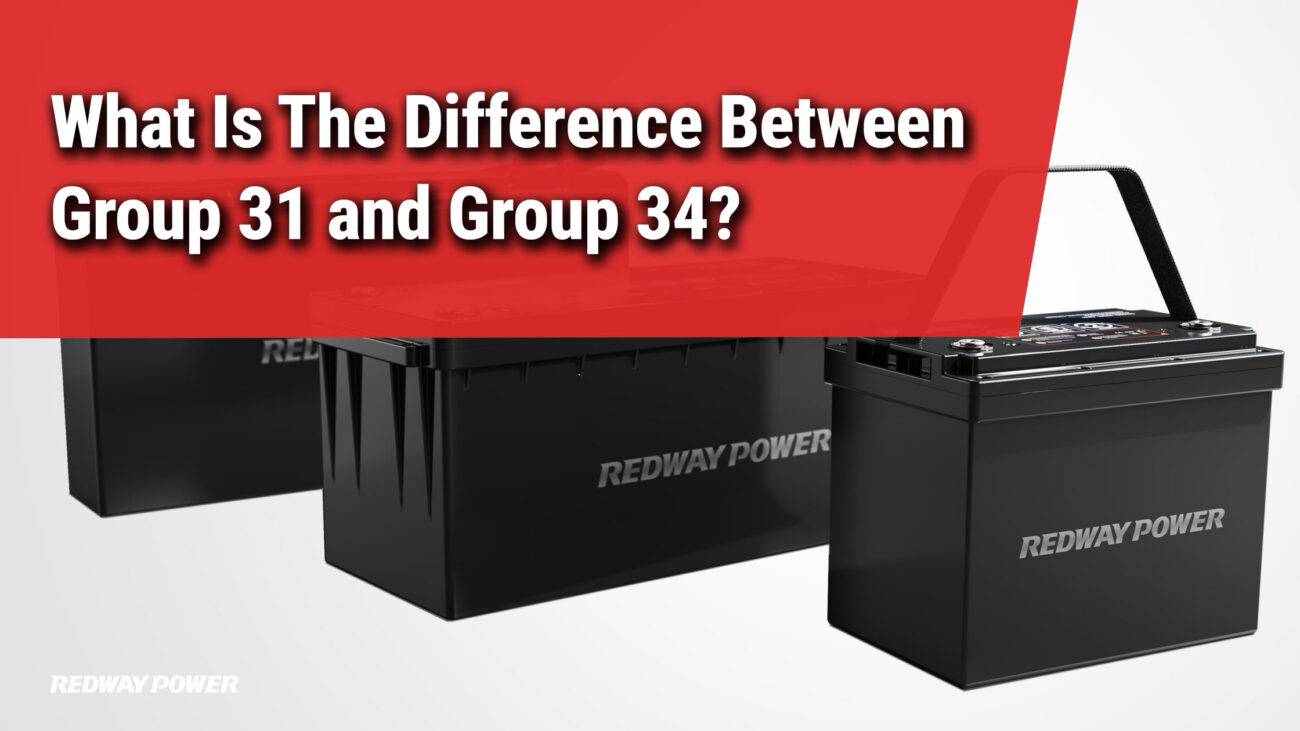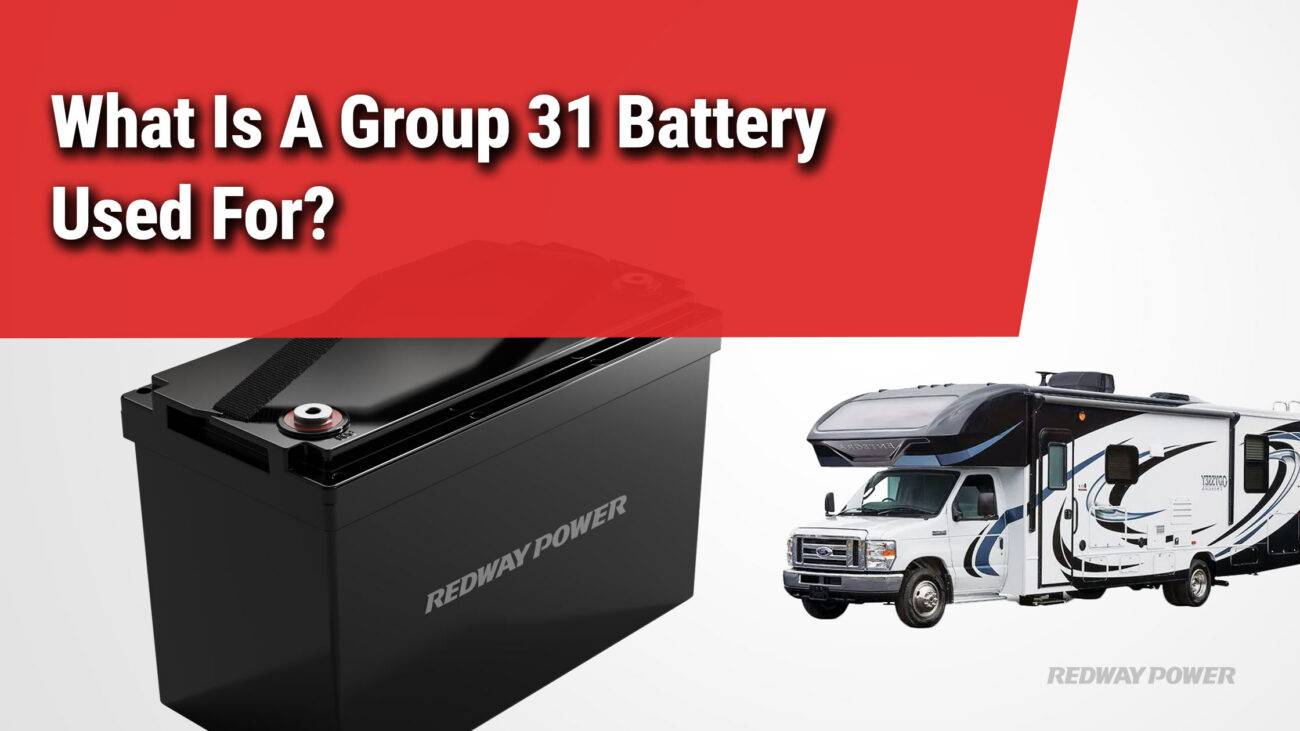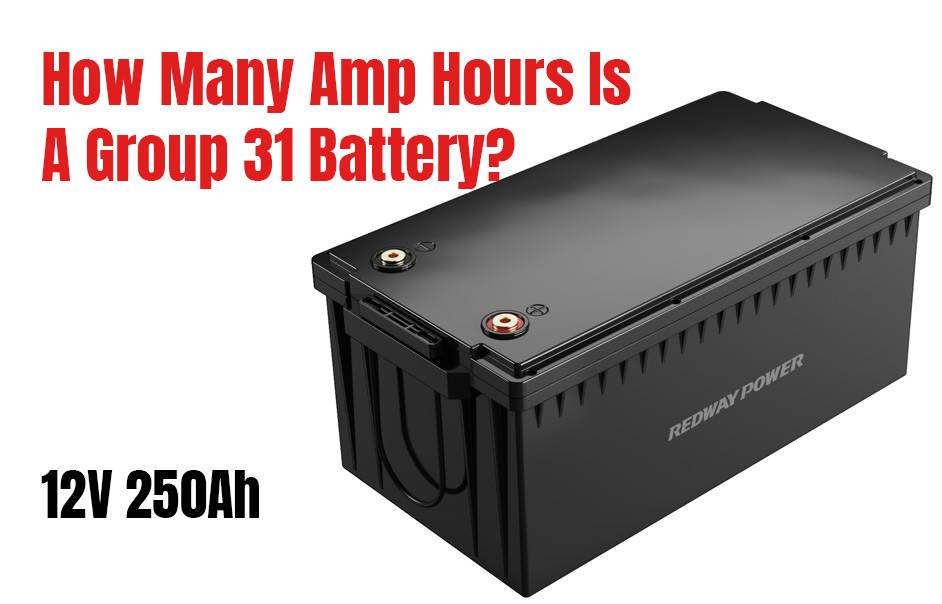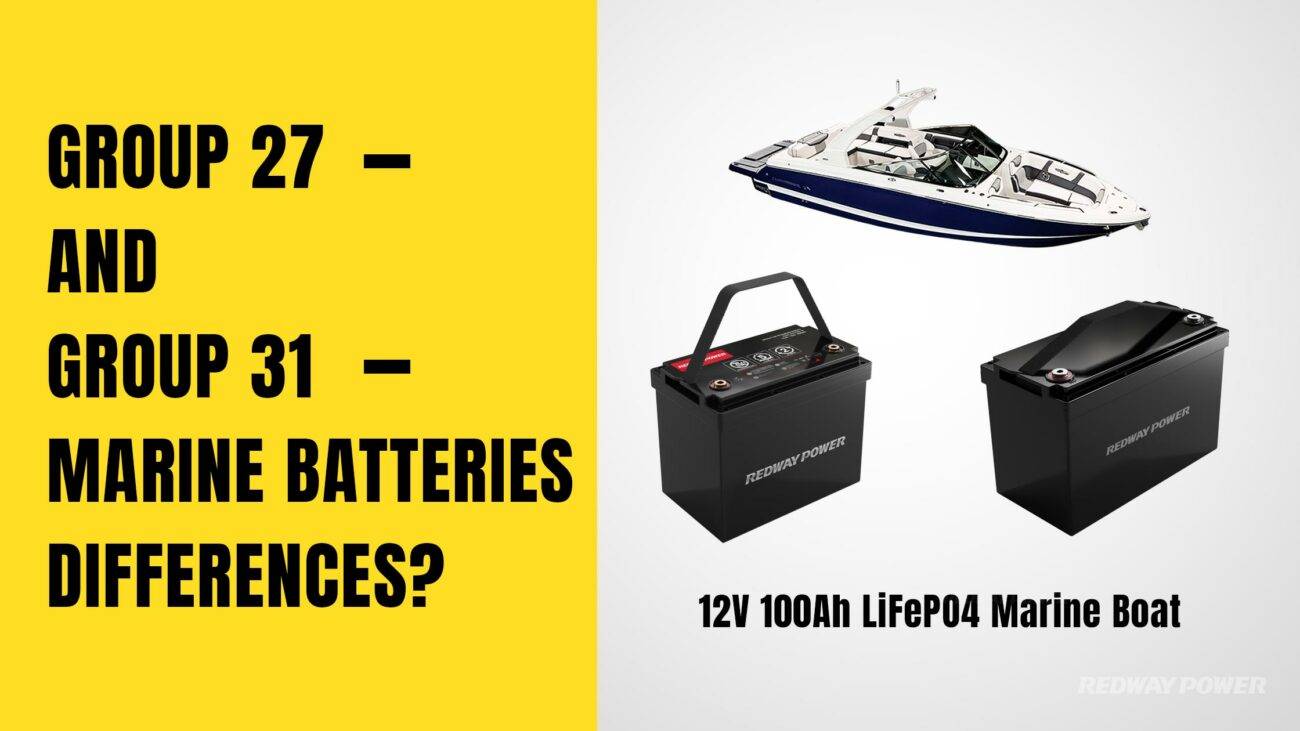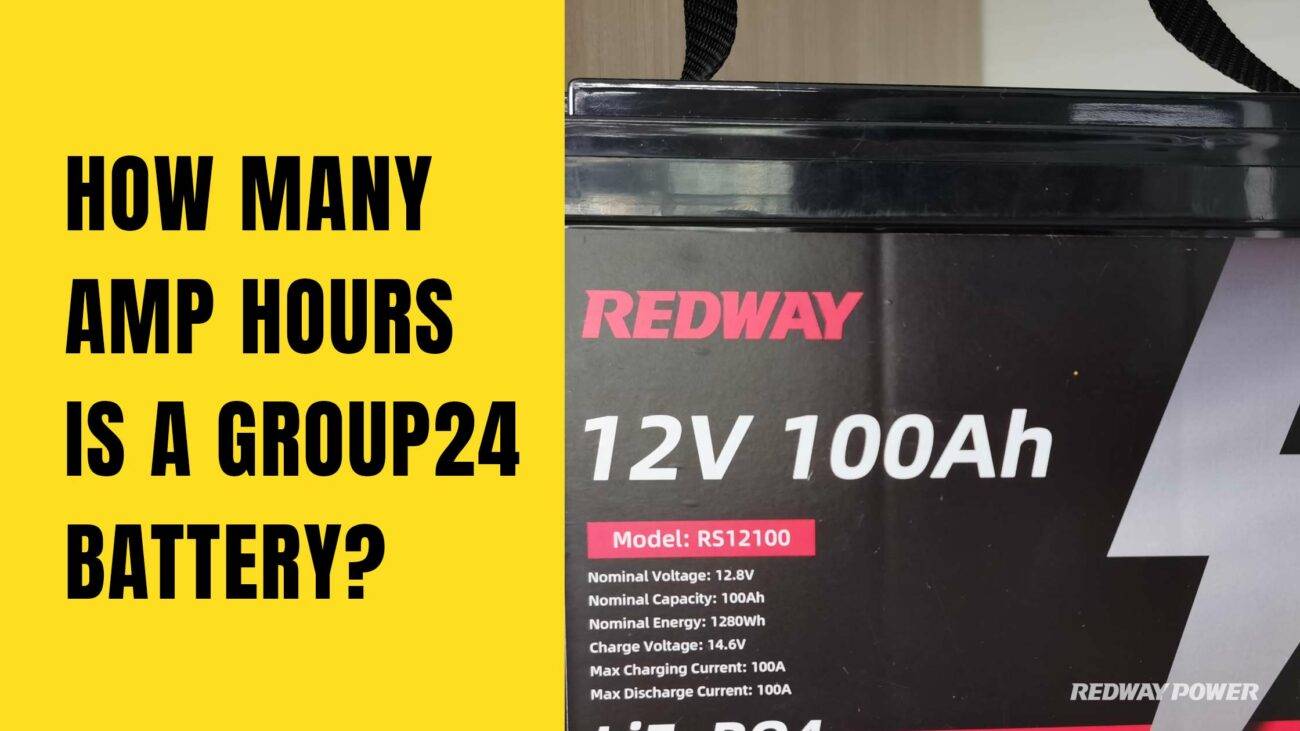- Forklift Lithium Battery
-
48V
- 48V 210Ah
- 48V 300Ah
- 48V 420Ah (949 x 349 x 569 mm)
- 48V 420Ah (950 x 421 x 450 mm)
- 48V 456Ah
- 48V 460Ah (830 x 630 x 590 mm)
- 48V 460Ah (950 x 421 x 450 mm)
- 48V 460Ah (800 x 630 x 600 mm)
- 48V 460Ah (820 x 660 x 470 mm)
- 48V 500Ah
- 48V 560Ah (810 x 630 x 600 mm)
- 48V 560Ah (950 x 592 x 450 mm)
- 48V 600Ah
- 48V 630Ah
-
48V
- Lithium Golf Cart Battery
- 12V Lithium Battery
12V 150Ah Lithium RV Battery
Bluetooth App | BCI Group 31
LiFePO4 Lithium
Discharge Temperature -20°C ~ 65°C
Fast Charger 14.6V 50A
Solar MPPT Charging - 24V Lithium Battery
- 36V Lithium Battery
- 48V Lithium Battery
-
48V LiFePO4 Battery
- 48V 50Ah
- 48V 50Ah (for Golf Carts)
- 48V 60Ah (8D)
- 48V 100Ah (8D)
- 48V 100Ah
- 48V 100Ah (Discharge 100A for Golf Carts)
- 48V 100Ah (Discharge 150A for Golf Carts)
- 48V 100Ah (Discharge 200A for Golf Carts)
- 48V 150Ah (for Golf Carts)
- 48V 160Ah (Discharge 100A for Golf Carts)
- 48V 160Ah (Discharge 160A for Golf Carts)
-
48V LiFePO4 Battery
- 60V Lithium Battery
-
60V LiFePO4 Battery
- 60V 20Ah
- 60V 30Ah
- 60V 50Ah
- 60V 50Ah (Small Size / Side Terminal)
- 60V 100Ah (for Electric Motocycle, Electric Scooter, LSV, AGV)
- 60V 100Ah (for Forklift, AGV, Electric Scooter, Sweeper)
- 60V 150Ah (E-Motocycle / E-Scooter / E-Tricycle / Tour LSV)
- 60V 200Ah (for Forklift, AGV, Electric Scooter, Sweeper)
-
60V LiFePO4 Battery
- 72V~96V Lithium Battery
- Rack-mounted Lithium Battery
- E-Bike Battery
- All-in-One Home-ESS
- Wall-mount Battery ESS
-
Home-ESS Lithium Battery PowerWall
- 24V 100Ah 2.4kWh PW24100-S PowerWall
- 48V 50Ah 2.4kWh PW4850-S PowerWall
- 48V 50Ah 2.56kWh PW5150-S PowerWall
- 48V 100Ah 5.12kWh PW51100-F PowerWall (IP65)
- 48V 100Ah 5.12kWh PW51100-S PowerWall
- 48V 100Ah 5.12kWh PW51100-H PowerWall
- 48V 200Ah 10kWh PW51200-H PowerWall
- 48V 300Ah 15kWh PW51300-H PowerWall
PowerWall 51.2V 100Ah LiFePO4 Lithium Battery
Highly popular in Asia and Eastern Europe.
CE Certification | Home-ESS -
Home-ESS Lithium Battery PowerWall
- Portable Power Stations
BCI Battery Group Size Chart (Summary Table, or Data Chart)
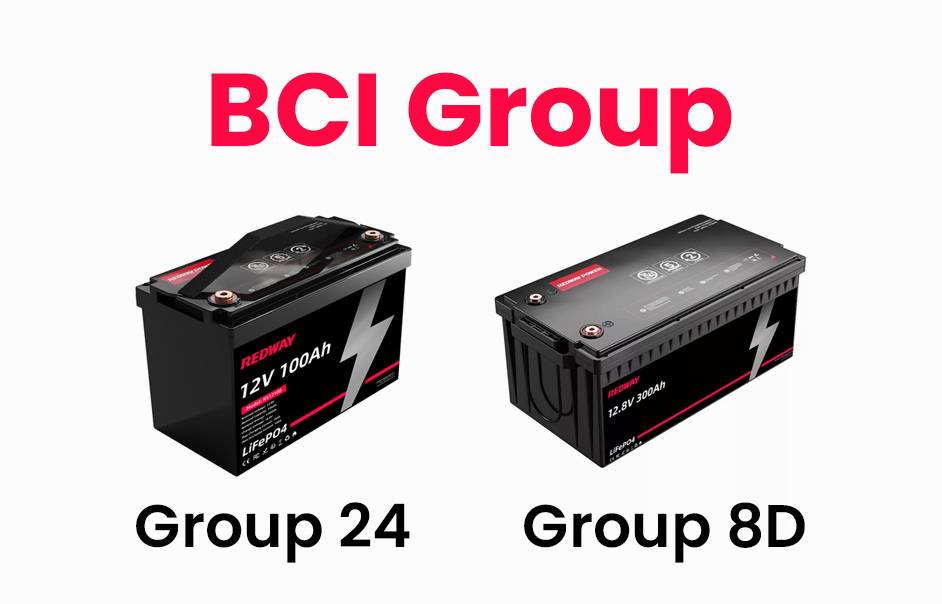
BCI Battery Group Size Chart categorizes car batteries by size. Group 27 and Group 31 differ in size and capacity, with Group 31 larger and higher-rated. Group 24 vs. Group 27 favors the latter in capacity and size. Group 51R suits compact cars. Group 35 offers higher capacity for larger vehicles. Various sizes like Group 47, 34, 48, 41, 65, 94R, and 78 cater to different needs.
What is a Battery Size Chart and Why is it Important?
A battery size chart is a reference tool that lists different battery sizes along with their dimensions, capacities, and applications. This chart helps users identify compatible batteries for their devices, ensuring they select the correct size for optimal performance. Understanding battery sizes can prevent issues related to improper fit or insufficient power supply.
How to Read and Interpret a Battery Size Chart?
Reading a battery size chart involves understanding the key components listed, such as group size, dimensions (length, width, height), and capacity ratings. Typically, the chart will present this information in an organized format, allowing users to quickly find the specifications they need.Example of a Basic Battery Size Chart:
| Group Size | Length (inches) | Width (inches) | Height (inches) |
|---|---|---|---|
| Group 24 | 10.25 | 6.81 | 8.88 |
| Group 27 | 12.06 | 6.81 | 8.88 |
| Group 31 | 13.00 | 6.81 | 9.44 |
This chart format allows users to compare different battery sizes easily.
Which Common Battery Sizes Should You Know About?
Common battery sizes include Group 24, Group 27, and Group 31 batteries, among others. Each group size has specific dimensions that make it suitable for various applications:
- Group 24: Often used in RVs and boats.
- Group 27: Commonly found in larger vehicles and marine applications.
- Group 31: Typically used in heavy-duty vehicles and equipment.
Knowing these sizes helps consumers make informed decisions based on their specific power requirements.
BCI Group Numbers, and Dimensional Specifications (Summary Table)
BCI Group Numbers categorize batteries by dimensions for proper fitment. Each number corresponds to specific size sets, indicating battery size. Dimensional specifications include length, width, height, and polarity. These standards ensure compatibility in various devices and vehicles, aiding in selecting the right battery.
| BCI Group Size | L x W x H (mm) | L x W x H (inches) | Redway Power Lithium Batteries |
| 21 | 208 x 173 x 222 | 8 3/16 x 6 13/16 x 8 3/4 | |
| 21R | 208 x 173 x 222 | 8 3/16 x 6 13/16 x 8 3/4 | |
| 22F | 241 x 175 x 211 | 9 1/2 x 6 7/8 x 8 5/16 | |
| 22HF | 241 x 175 x 229 | 9 1/2 x 6 7/8 x 9 | |
| 22NF | 240 x 140 x 227 | 9 7/16 x 5 1/2 x 8 15/16 | |
| 22R | 229 x 175 x 211 | 9 x 6 7/8 x 8 5/16 | |
| 24 | 260 x 173 x 225 | 10 1/4 x 6 13/16 x 8 7/8 | 12V75Ah 12V90Ah 12V100Ah 24V50Ah |
| 24F | 273 x 173 x 229 | 10 3/4 x 6 13/16 x 9 | |
| 24H | 260 x 173 x 238 | 10 1/4 x 6 13/16 x 9 3/8 | |
| 24R | 260 x 173 x 229 | 10 1/4 x 6 13/16 x 9 | |
| 24T | 260 x 173 x 248 | 10 1/4 x 6 13/16 x 9 3/4 | |
| 25 | 230 x 175 x 225 | 9 1/16 x 6 7/8 x 8 7/8 | |
| 26 | 208 x 173 x 197 | 8 3/16 x 6 13/16 x 7 3/4 | |
| 26R | 208 x 173 x 197 | 8 3/16 x 6 13/16 x 7 3/4 | |
| 27 | 306 x 173 x 225 | 12 1/16 x 6 13/16 x 8 7/8 | 12V90Ah |
| 27F | 318 x 173 x 227 | 12 1/2 x 6 13/16 x 8 15/16 | |
| 27H | 298 x 173 x 235 | 11 3/4 x 6 13/16 x 9 1/4 | |
| 29NF | 330 x 140 x 227 | 13 x 5 1/2 x 8 15/16 | |
| 31 | 330 x 173 x 240 | 13 x 6 13/16 x 9 7/16 | 12V100Ah 12V120Ah 12V150Ah 24V60Ah |
| 33 | 338 x 173 x 238 | 13 5/16 x 6 13/16 x 9 3/8 | |
| 34 | 260 x 173 x 200 | 10 1/4 x 6 13/16 x 7 7/8 | 12V75Ah-ST (Car Starting Battery) |
| 34R | 260 x 173 x 200 | 10 1/4 x 6 13/16 x 7 7/8 | |
| 35 | 230 x 175 x 225 | 9 1/16 x 6 7/8 x 8 7/8 | |
| 36R | 263 x 183 x 206 | 10 3/8 x 7 3/16 x 8 1/8 | |
| 40R | 278 x 175 x 175 | 11 x 6 15/16 x 6 15/16 | |
| 41 | 293 x 175 x 175 | 11 9/16 x 6 15/16 x 6 15/16 | |
| 42 | 242 x 175 x 175 | 9 9/16 x 6 15/16 x 6 15/16 | |
| 43 | 334 x 175 x 205 | 13 1/8 x 6 7/8 x 8 1/16 | |
| 45 | 240 x 140 x 227 | 9 7/16 x 5 1/2 x 8 15/16 | |
| 46 | 273 x 173 x 229 | 10 3/4 x 6 13/16 x 9 | |
| 47 | 242 x 175 x 190 | 9 9/16 x 6 7/8 x 7 1/2 | |
| 48 | 278 x 175 x 190 | 11 x 6 7/8 x 7 1/2 | |
| 49 | 354 x 175 x 190 | 13 15/16 x 6 7/8 x 7 1/2 | |
| 50 | 343 x 127 x 254 | 13 1/2 x 5 x 10 | |
| 51 | 238 x 129 x 223 | 9 3/8 x 5 1/16 x 8 3/4 | |
| 51R | 238 x 129 x 223 | 9 3/8 x 5 1/16 x 8 3/4 | |
| 52 | 186 x 147 x 210 | 7 5/16 x 5 13/16 x 8 1/4 | |
| 53 | 330 x 119 x 210 | 13 x 4 11/16 x 8 1/4 | |
| 54 | 186 x 154 x 212 | 7 5/16 x 6 1/16 x 8 3/8 | |
| 55 | 218 x 154 x 212 | 8 9/16 x 6 1/16 x 8 3/8 | |
| 56 | 254 x 154 x 212 | 10 x 6 1/16 x 8 3/8 | |
| 57 | 205 x 183 x 177 | 8 1/16 x 7 3/16 x 6 15/16 | |
| 58 | 255 x 183 x 177 | 10 1/16 x 7 3/16 x 6 15/16 | |
| 58R | 255 x 183 x 177 | 10 1/16 x 7 3/16 x 6 15/16 | |
| 59 | 255 x 193 x 196 | 10 1/16 x 7 5/8 x 7 3/4 | |
| 60 | 332 x 160 x 225 | 13 1/16 x 6 5/16 x 8 7/8 | |
| 61 | 192 x 162 x 225 | 7 9/16 x 6 3/8 x 8 7/8 | |
| 62 | 225 x 162 x 225 | 8 7/8 x 6 3/8 x 8 7/8 | |
| 63 | 258 x 162 x 225 | 10 3/16 x 6 3/8 x 8 7/8 | |
| 64 | 296 x 162 x 225 | 11 5/8 x 6 3/8 x 8 7/8 | |
| 65 | 306 x 192 x 192 | 12 1/16 x 7 9/16 x 7 9/16 | |
| 66 | 306 x 192 x 194 | 12 1/16 x 7 9/16 x 7 11/16 | |
| 67R | 231 x 175 x 176 | 9 1/8 x 6 7/8 x 6 15/16 | |
| 70 | 208 x 179 x 186 | 8 3/16 x 7 1/16 x 7 5/16 | |
| 71 | 208 x 179 x 216 | 8 3/16 x 7 1/16 x 8 1/2 | |
| 72 | 230 x 179 x 210 | 9 1/16 x 7 1/16 x 8 1/4 | |
| 73 | 230 x 179 x 216 | 9 1/16 x 7 1/16 x 8 1/2 | |
| 74 | 260 x 184 x 222 | 10 1/4 x 7 1/4 x 8 3/4 | |
| 75 | 230 x 179 x 186 | 9 1/16 x 7 1/16 x 7 5/16 | |
| 76 | 334 x 179 x 216 | 13 1/8 x 7 1/16 x 8 1/2 | |
| 77 | 306 x 184 x 222 | 12 1/16 x 7 1/4 x 8 3/4 | |
| 78 | 260 x 179 x 186 | 10 1/4 x 7 1/16 x 7 5/16 | 12V75Ah-ST (Car Starting Battery) |
| 79 | 307 x 179 x 188 | 12 1/16 x 7 1/16 x 7 3/8 | |
| 85 | 230 x 173 x 203 | 9 1/16 x 6 13/16 x 8 | |
| 86 | 230 x 173 x 203 | 9 1/16 x 6 13/16 x 8 | |
| 90 | 243 x 175 x 175 | 9 9/16 x 6 7/8 x 6 7/8 | |
| 91 | 280 x 175 x 175 | 11 x 6 7/8 x 6 7/8 | |
| 92 | 316 x 175 x 175 | 12 7/16 x 6 7/8 x 6 7/8 | |
| 93 | 354 x 175 x 175 | 13 15/16 x 6 7/8 x6 7/8 | |
| 94R | 315 x 175 x 190 | 12 7/16 x 6 7/8 x 7 1/2 | |
| 95R | 394 x 175 x 190 | 15 9/16 x 6 7/8 x 7 1/2 | |
| 96R | 242 x 175 x 175 | 9 1/2 x 6 7/8 x 6 7/8 | |
| 97R | 252 x 175 x 190 | 9 15/16 x 6 7/8 x 7 1/2 | |
| 98R | 283 x 175 x 190 | 11 1/8 x 6 7/8 x 7 1/2 | |
| 99 | 207 x 175 x 175 | 8 1/8 x 6 7/8 x 6 7/8 | |
| 99R | 210 x 175 x 175 | 8 1/4 x 6 7/8 x 6 7/8 | |
| 100 | 260 x 179 x 188 | 10 1/4 x 7 1/16 x 7 3/8 | |
| 101 | 260 x 179 x 170 | 10 1/4 x 7 1/16 x 6 11/16 | |
| 121R | 208 x 177 x 215 | 8 1/4 x 7 x 8 1/2 | |
| 124 | 265 x 175 x 214 | 10 7/16 x 6 7/8 x 8 7/16 | |
| 124R | 262 x 177 x 218 | 10 3/8 x 7 x 8 5/8 | |
| 151R | 188 x 125 x 225 | 7 7/16 x 4 15/16 x 8 7/8 | |
| Passenger Car and Light Commercial 6V Batteries (3 Cells) | |||
| 1 | 232 x 181 x 238 | 9 1/8 x 7 1/8 x 9 3/8 | |
| 2 | 264 x 181 x 238 | 10 3/8 x 7 1/8 x 9 3/8 | |
| 2E | 492 x 105 x 232 | 19 3/8 x 4 1/8 x 9 1/8 | |
| 2N | 254 x 141 x 227 | 10 x 5 9/16 x 8 15/16 | |
| 17HF | 187 x 175 x 229 | 7 3/8 x 6 7/8 x 9 | |
| 19L | 216 x 178 x 191 | 8 1/2 x 7 x 7 1/2 | |
| Heavy Duty Commercial and Special Tractor 12V Batteries (6 Cells) | |||
| 3EE | 491 x 111 x 225 | 19 5/16 x 4 3/8 x 8 7/8 | |
| 3ET | 491 x 111 x 249 | 19 5/16 x 4 3/8 x 9 13/16 | |
| 4D | 527 x 222 x 250 | 20 3/4 x 8 3/4 x 9 7/8 | |
| 4DLT | 508 x 208 x 202 | 20 x 8 3/16 x 7 15/16 | |
| 6D | 527 x 254 x 260 | 20 3/4 x 10 x 10 1/4 | |
| 8D | 527 x 283 x 250 | 20 3/4 x 11 1/8 x 9 7/8 | 12V300Ah 24V150Ah 24V210Ah 48V60Ah 48V100Ah |
| 12T | 179 x 177 x 202 | 7 1/16 x 6 15/16 x 7 15/16 | |
| 28 | 261 x 173 x 240 | 10 1/4 x 6 13/16 x 9 7/16 | |
| 29H | 334 x 171 x 232 | 13 1/8 x 6 3/4 x 9 1/8 | |
| 30H | 343 x 173 x 235 | 13 1/2 x 6 13/16 x 9 1/4 | |
| 31 | 330 x 173 x 240 | 13 x 6 13/16 x 9 7/16 | 12V100Ah 12V120Ah 12V150Ah 24V60Ah |
| Heavy Duty Commercial and Special Tractor 6V Batteries (3 Cells) | |||
| 3 | 298 x 181 x 238 | 11 3/4 x 7 1/8 x 9 3/8 | |
| 3EH | 491 x 111 x 249 | 19 5/16 x 4 3/8 x 9 13/16 | |
| 4 | 334 x 181 x 238 | 13 1/8 x 7 1/8 x 9 3/8 | |
| 4EH | 491 x 127 x 249 | 19 5/16 x 5 x 9 13/16 | |
| 5D | 349 x 181 x 238 | 13 3/4 x 7 1/8 x 9 3/8 | |
| 7D | 413 x 181 x 238 | 16 1/4 x 7 1/8 x 9 3/8 | |
| Electric Vehicle 6V Batteries (3 Cells) | |||
| GC2 | 264 x 183 x 277 | 10 3/8 x 7 3/16 x 10 7/8 | |
| GC2H | 264 x 183 x 295 | 10 3/8 x 7 3/16 x 11 5/8 | |
| Electric Vehicle 8V Batteries (4 Cells) | |||
| GC8 | 264 x 183 x 277 | 10 3/8 x 7 3/16 x 10 7/8 | |
| GC8H | 264 x 183 x 295 | 10 3/8 x 7 3/16 x 11 5/8 | |
| Electric Vehicle 12V Batteries (6 Cells) | |||
| Group GC12 Batteries | 327 x 183 x 277 | 12 7/8 x 7 3/16 x 10 7/8 | |
| Commercial/Marine 8V Batteries (4 Cells) | |||
| 981 | 527 x 191 x 273 | 20 3/4 x 7 1/2 x 10 3/4 | |
| 982 | 546 x 191 x 267 | 21 1/2 x 7 1/2 x 10 1/2 | |
| 983 | 622 x 191 x 267 | 24 1/2 x 7 1/2 x 10 1/2 | |
| 984 | 699 x 191 x 267 | 27 1/2 x 7 1/2 x 10 1/2 | |
| 985 | 683 x 216 x 273 | 26 7/8 x 8 1/2 x 11 3/4 | |
| General Purpose 12V Batteries (6 Cells) | |||
| Group U1 Batteries | 197 x 132 x 186 | 7 3/4 x 5 3/16 x 7 5/16 | |
| Group U1R Batteries | 197 x 132 x 186 | 7 3/4 x 5 3/16 x 7 5/16 | |
| U2 | 160 x 132 x 181 | 6 5/16 x 5 3/16 x 7 1/8 | |
| Ordnance 12V Batteries (6 Cells) | |||
| 2H | 260 x 135 x 227 | 10 1/4 x 5 5/16 x 8 15/16 | |
| 6T | 286 x 267 x 230 | 11 1/4 x 10 1/2 x 9 1/16 | |
| Ordnance 24V Batteries (12 Cells) | |||
| 4H | 273 x 262 x 229 | 10 3/4 x 10 5/16 x 9 | |
| Floor Scrubber 6V Commercial Batteries (3 Cells) | |||
| 901 | 298 x 181 x 302 | 11 3/4 x 7 1/8 x 11 7/8 | |
| 902 | 302 x 181 x 371 | 12 x 7 1/8 x 14 5/8 | |
| 903 | 302 x 181 x 432 | 12 x 7 1/8 x 17 | |
| Floor Scrubber 12V Commercial Batteries (6 Cells) | |||
| 920 | 356 x 171 x 311 | 14 x 6 3/4 x 12 1/2 | |
| 921 | 397 x 181 x 378 | 15 3/4 x 7 1/8 x 14 7/8 | |
Data excerpted from the BCI Battery Replacement Data Book.
Note 1: The maximum height mentioned includes the terminal posts. Width and length measurements typically account for the widest point, encompassing protruding flanges, except for hold-down flanges at the battery’s bottom. For comprehensive details, refer to the diagrams available in the BCI Battery Replacement Data Book.
Note 2: Contact Redway for custom order details.
BCI Battery Groups, DIN, and EN Codes Cross Reference Chart
BCI Battery Groups, DIN, and EN Codes Cross Reference Chart compares battery standards globally. BCI codes are used in North America, while DIN and EN codes are common in Europe. This chart aids in finding equivalent batteries across standards, ensuring compatibility for international applications.
The following cross-reference chart lists the most popular BCI battery groups and their DIN and EN equivalent codes:
| Maximum BCI Battery Dimensions (L x W x H, inch/mm) |
BCI Group | Maximum DIN/EN Battery Dimensions (L x W x H mm) |
DIN Codes | EN Codes |
| 10 15/16 x 6 7/8 x 6 7/8 277 x 175 x 175 |
40R | 278 x 175 x 175 | T6, LB3 | 66LB |
| 11 3/16 x 6 7/8 x 6 7/8 293 x 175 x 175 |
41 | 293 x 175 x 175 | T65 | 54LB |
| 9 5/16 x 6 13/16 x 6 13/16 237 x 173 x 173 |
42 | 242 x 175 x 175 | T5, LB2 | 45LB |
| 9 7/16 x 6 7/8 x 7 1/2 242 x 175 x 190 |
47 | 242 x 175 x 190 | H5, L2 | 55L2 |
| 11 x 6 7/8 x 7 1/2 278 x 175 x 190 |
48 | 278 x 175 x 190 | H6, L3 | 66L3 |
| 13 15/16 x 6 7/8 x 7 1/2 354 x 175 x 190 |
49 | 354 x 175 x 190 | H8, L5 | 88L5 |
| 9 11/16 x 6 7/8 x 6 7/8 246 x 175 x 175 |
90 | 242 x 175 x 175 | T5, LB2 | 45LB |
| 11 x 6 7/8 x 6 7/8 280 x 175 x 175 |
91 | 278 x 175 x 175 | T6, LB3 | 66LB |
| 12 1/2 x 6 7/8 x 6 7/8 317 x 175 x 175 |
92 | 315 x 175 x 175 | T7, LB4 | 77LB |
| 15 x 6 7/8 x 6 7/8 354 x 175 x 175 |
93 | 354 x 175 x 175 | T8, LB5 | 88LB |
| 12 7/16 x 6 7/8 x 7 1/2 315 x 175 x 190 |
94R | 315 x 175 x 190 | H7, L4 | 77L4 |
| 15 9/16 x 6 7/8 x 7 1/2 394 x 175 x 190 |
95R | 394 x 175 x 190 | H9, L6 | – |
| 9 15/16 x 6 7/8 x 7 1/2 252 x 175 x 190 |
97R | 252 x 175 x 190 | H5, L2 | 55L2 |
| 11 1/8 x 6 7/8 x 7 1/2 283 x 175 x 190 |
98R | 283 x 175 x 190 | H6, L3 | 66L3 |
| 8 1/8 x 6 7/8 x 6 7/8 207 x 175 x 175 |
99 | 207 x 175 x 175 | T4, LB1 | 36LB |
| 8 1/4 x 6 7/8 x 6 7/8 210 x 175 x 175 |
99R | 210 x 175 x 175 | T4, LB1 | 36LB |
| – | – | 175 x 175 x 190 | H3, L0 | 32L0 |
| – | – | 297 x 175 x 190 | H4, L1 | 45L1 |
Comparison of Small 12V Deep Cycle General-Purpose Batteries
Comparison of Small 12V Deep Cycle General-Purpose Batteries assesses options for capacity, lifespan, and versatility. Commonly used in marine, RV, and off-grid systems, these batteries vary in amp-hour rating, cycle life, and maintenance needs. Consider these factors when selecting the ideal battery for specific applications
Small 12V deep cycle/general purpose batteries are mostly Sealed Lead-Acid (SLA) or Lithium Iron Phosphate (LiFePO4) batteries, typically used in UPS devices, alarms, toys, wheelchairs, and similar.
Most popular models are batteries with smaller capacities, usually up to 30-35Ah, where standard Group U1 and U1R batteries kick in.
If you are looking for even larger deep cycle/general purpose batteries, consider one of the larger battery groups, like groups 24, 27, 31, etc.
The following comparison chart lists some of the most popular small 12V general-purpose batteries with their dimensions and terminals.
| Nominal Capacity | Dimensions inches (L x W x H) |
Dimensions mm (L x W x H) |
Terminals |
| 12V 2.9Ah | 3.11 x 2.20 x 3.90 inches | 79 x 56 x 99 mm | F1 (T1) |
| 12V 3.5Ah | 5.28 x 2.64 x 2.38 inches | 134 x 67 x 61 mm | F1 (T1) |
| 12V 4Ah | 3.54 x 2.76 x 3.98 inches | 90 x 70 x 101 mm | F1 (T1) |
| 12V 5Ah | 3.54 x 2.76 x 3.98 inches | 90 x 70 x 101 mm | F1 (T1) |
| 12V 7Ah | 5.94 x 2.56 x 3.7 inches | 151 x 65 x 94 mm | F1 (mostly) |
| 12V 9Ah | 5.94 x 2.56 x 3.7 inches | 151 x 65 x 94 mm | F2 (mostly) |
| 12V 10Ah | 5.94 x 2.56 x 4.37 inches | 151 x 65 x 111 mm | F2 (T2) (mostly) |
| 12V 12Ah | 5.94 x 3.86 x 3.98 inches | 151 x 98 x 101 mm | F2 (mostly) |
| 12V 15Ah | 5.94 x 3.86 x 3.98 inches | 151 x 98 x 101 mm | F2 |
| 12V 18Ah, 19Ah, 20Ah+ | 7.15 x 3.03 x 6.59 inches | 181 x 77 x 167 mm | T3 (NB), M5, M6 |
| 12V 26Ah | 6.89 x 6.54 x 4.94 inches | 175 x 166 x 126 mm | NB |
| 12V 30Ah | 6.50 x 4.90 x 6.90 inches | 165 x 125 x 175 mm | T3 (NB) |
| 12V 35Ah | 7.68 x 5.12 x 6.46 inches | 195 x 130 x 164 mm | T6 (NB) |
| 12V 35Ah (U1, U1R) | 7.75 x 5.18 x 7.31 inches | 197 x 132 x 186 mm | NB |
| 12V 55Ah | 9.04 x 5.45 x 8.15 inches | 230 x 139 x 207 mm | T6 (NB) |
| 12V 80Ah | 10.16 x 6.65 x 8.20 inches | 258 x 169 x 208 mm | T6 (NB) |
What happens if I use the wrong group size battery?
Using the wrong group size battery can cause fitment issues, electrical problems, performance issues, and safety hazards. Improper fitment may damage the battery or the vehicle. Incorrect specifications can lead to undercharging/overcharging, damaging components, and difficulty starting the vehicle. Consult manuals or mechanics to ensure proper selection and avoid these issues.
Using the wrong group size battery for your vehicle can lead to various issues:
- Fitment Problems: Batteries come in different sizes and shapes. Using a battery with the wrong group size may not fit properly in your vehicle’s battery compartment. This can lead to physical damage to the battery, the vehicle, or both.
- Electrical Compatibility: Batteries are designed to provide a specific voltage and capacity suitable for the vehicle’s electrical system. Using a battery with the wrong specifications can lead to electrical problems such as undercharging or overcharging, which may damage sensitive electronic components like the alternator or the vehicle’s computer systems.
- Performance Issues: A battery with the wrong group size may not provide enough cranking power (CCA – Cold Cranking Amps) or reserve capacity to start the engine reliably or power auxiliary systems. This can result in difficulty starting the vehicle, especially in cold weather, or frequent battery failures.
- Safety Concerns: In extreme cases, using an improperly sized battery can pose safety hazards such as leaking electrolyte, overheating, or even explosion due to excessive charging or discharging.
To avoid these issues, always consult your vehicle’s owner’s manual or seek advice from a professional mechanic to ensure you select the correct group size battery for your vehicle.
How to Choose the Right Battery Group Size
Choosing the right battery group size is crucial for optimal car performance and longevity. Using an incorrect size can result in poor connections, reduced power, and starting difficulties, especially in cold weather. It may also harm the charging system, leading to early failure. Ensure compatibility with your car’s power needs for reliability and cost savings.
- Impact of Wrong Size: Using an incorrect battery group size results in poor connections, reduced power, and difficulties starting, especially in cold weather. It can lead to vibrations that harm other car parts.
- Charging System Effects: Mismatched sizes affect the charging system, potentially causing early failure of both the battery and alternator, impacting their ability to charge properly.
- System Compatibility: Each car model has specific power needs. Selecting the right group size ensures compatibility, optimizing performance, and preventing potential damage to your car’s electrical system.
Investing time in research or seeking expert advice to choose the right battery group size pays off in reliability and cost savings for your vehicle.
What are the different car battery types?
Car batteries come in several types:
- Lead-Acid: Affordable and reliable but not great in cold weather.
- AGM (Absorbent Glass Mat): Better performance for high-demand vehicles.
- Lithium-Ion: Lightweight with a long lifespan, used in hybrids.
- Gel Cell: Good vibration resistance but lower power output.
- Deep Cycle: Provides sustained power over time for RVs and boats.
Always choose based on your vehicle’s needs.
What are the corresponding group sizes for car batteries?
Car batteries come in various group sizes that are important for a proper fit. Common sizes include Group 24 for smaller cars, Group 35 for compact vehicles, Group 51, Group 65 for larger vehicles, and Group 78 for trucks and SUVs. Always check your owner’s manual or the battery label to find the correct group size for your vehicle.
How to Determine Car Battery Group Size
To determine your car’s battery group size, consult the owner’s manual or inspect the existing battery for alphanumeric codes like 24F or H6. Seek assistance from a mechanic or auto parts store if needed. Choosing the correct size is crucial for optimal vehicle performance and prevents damage to the charging system.
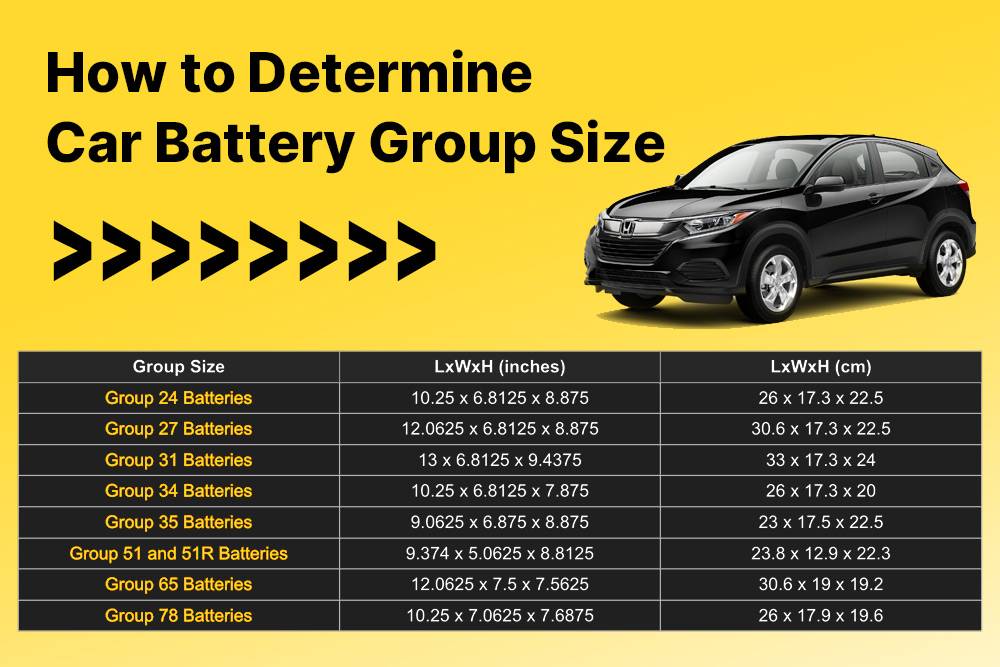
- Check the Owner’s Manual: Consult your car’s manual, as it often specifies the recommended battery group size for your make and model.
- Inspect the Existing Battery: Examine your current battery for a label or stamp with alphanumeric codes like 24F or H6 – these indicate the specific group size.
- Seek Professional Help: When in doubt, consult a mechanic or visit an auto parts store for assistance. They have tools and expertise to identify the right battery group size for your vehicle.
Choosing the correct battery group size is crucial to prevent electrical issues and potential damage to your car’s charging system. Ensure accuracy for optimal vehicle performance and the longevity of your car’s electrical components.
What are the most popular battery group sizes?
Popular battery group sizes for vehicles include Group 24 for compact cars, Group 35 for compact cars and light trucks, and Group 48 (H6) for full-size sedans, SUVs, and trucks. Other common sizes are Group 49 (H8) for SUVs, Group 51R for compact cars and hybrids, Group 65 for trucks, SUVs, and performance cars, and Group 78 (H7) for SUVs and trucks. Consult your vehicle’s manual or a professional for the appropriate size.
Group 24: Typically used in smaller vehicles such as compact cars and some mid-size sedans.
Group 35: Commonly found in compact cars, small to mid-size sedans, and some light trucks.
Group 48 (H6): Used in larger vehicles such as full-size sedans, SUVs, and trucks.
Group 49 (H8): Often used in larger vehicles with higher electrical demands, such as SUVs, trucks, and luxury cars.
Group 51R: Commonly used in smaller vehicles with limited space for the battery, such as compact cars and some hybrids.
Group 65: Found in larger vehicles with higher electrical demands, such as trucks, SUVs, and performance cars.
Group 78 (H7): Used in larger vehicles, including some SUVs, trucks, and full-size sedans.
These are just a few examples, and there are many other group sizes available to accommodate the diverse range of vehicles on the market. It’s essential to consult your vehicle’s owner’s manual or consult with a professional to determine the appropriate battery group size for your specific vehicle.
How to Maintain Car Battery
Maintain your car battery with these tips: Inspect for corrosion and loose connections, clean terminals with a baking soda-water mix, minimize electrical accessory use when the engine is off, drive regularly, protect from extreme temperatures, test the charging system periodically, and learn jump-starting. Ensure longevity by caring for components like belts for overall vehicle health.
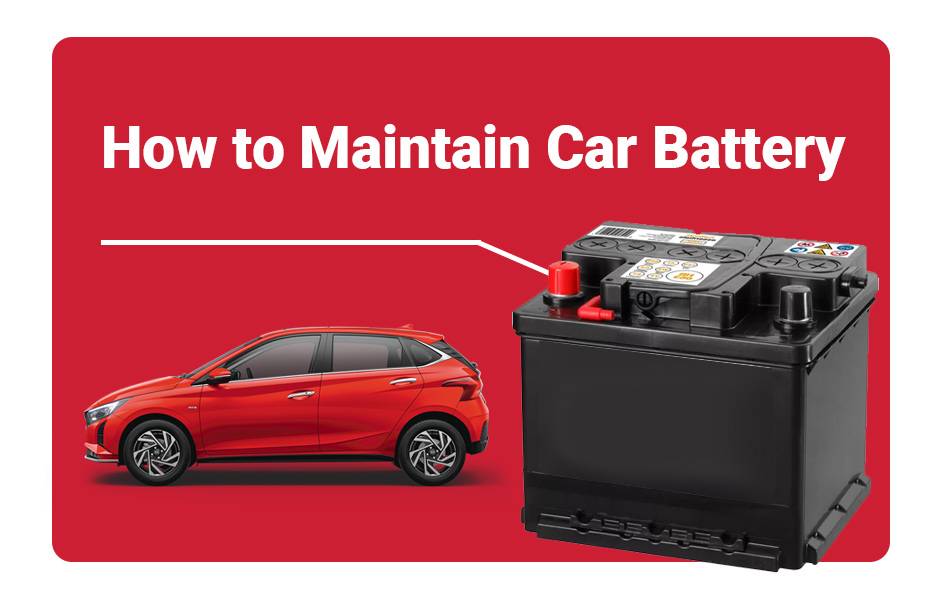
- Regular Inspections: Check for corrosion, loose connections, and leaks regularly. Clean terminals to maintain a solid connection.
- Keep it Clean: Clean the battery with a baking soda-water mix to gently remove buildup on terminals, promoting optimal performance.
- Mind Electrical Use: Minimize the use of electrical accessories when the engine is off to avoid draining the battery.
- Drive Regularly: Drive the car at least once a week for a reasonable distance to prevent decreased battery life and keep it charged.
- Temperature Protection: Extreme temperatures impact battery performance. Park in shaded areas during summer and use insulation blankets in winter.
- Charging System Check: Test the car’s charging system occasionally to catch issues early and prevent battery-related problems.
- Learn Jump-Starting: Understand how to safely jump-start a dead battery; it’s a valuable skill for emergencies.
| Group Size | LxWxH (inches) | LxWxH (mm) |
| Group 24 Batteries | 10.25 x 6.8125 x 8.875 | 260 x 173 x 225 |
| Group 27 Batteries | 12.0625 x 6.8125 x 8.875 | 306 x 173 x 225 |
| Group 31 Batteries | 13 x 6.8125 x 9.4375 | 330 x 173 x 240 |
| Group 34 Batteries | 10.25 x 6.8125 x 7.875 | 260 x 173 x 200 |
| Group 35 Batteries | 9.0625 x 6.875 x 8.875 | 230 x 175 x 225 |
| Group 51 and 51R Batteries | 9.374 x 5.0625 x 8.8125 | 238 x 129 x 223 |
| Group 65 Batteries | 12.0625 x 7.5 x 7.5625 | 306 x 190 x 192 |
| Group 78 Batteries | 10.25 x 7.0625 x 7.3125 | 260 x 179 x 186 |
Maintaining your car’s battery goes beyond fluid checks; caring for components like belts contributes to overall vehicle health and longevity.
Conclusion
FAQs
What is BCI group size in batteries?
The BCI group size is a system created by the Battery Council International that classifies batteries based on their dimensions and terminal layout. This helps ensure the right battery fits properly in cars and trucks, making it easier to find compatible options for various vehicles.
What does BCI mean on a battery?
BCI stands for Battery Council International, which sets standards for batteries in North America. It specifies battery sizes based on physical dimensions, voltage, cold cranking amps, amp-hours, terminal arrangement, and cell count to ensure proper fit and performance.
How do I know my battery group size?
To find your battery group size, check the label on your battery for ‘Group Size.’ If you can’t see it, look in your vehicle’s owner’s manual. You can also measure your battery’s dimensions and compare them to a BCI group size chart for more help.
What is the difference between Group 78 and 34?
Group 78 batteries are larger and designed for high-performance use, featuring side terminals. In contrast, Group 34 batteries are more compact, with top terminals, making them suitable for smaller cars and trucks. Both types can fit similar spaces, but Group 78 may have height issues due to its terminal design.
What are the sizes of batteries?
Common battery sizes include AAA, AA, C, D, and 9-volt. AAA batteries are smaller and hold less power, while D batteries are larger with higher capacity. Choosing the right size is important for your device’s performance. Other sizes like A, B, N, and CR123A are also available. Check your device’s requirements for the best fit.
Is C or D battery bigger?
D batteries are larger than C batteries. A D battery measures about 61.5 mm long and 34.2 mm wide, while a C battery is around 50 mm long and 26.2 mm wide. D batteries hold more power, making them great for energy-hungry devices like flashlights. Both provide 1.5 volts.
What battery is bigger than an AA?
Batteries larger than AA include C, D, and 18650 batteries. C batteries are used in toys and flashlights, while D batteries provide power for larger devices like radios. The 18650 battery is rechargeable and found in laptops, offering higher capacity than AA batteries.
What are the numbers and sizes of car batteries?
Car batteries come in different sizes, known as group sizes. Common sizes include Group 24 (10.25 x 6.81 x 8.88 inches) and Group 35 (9.06 x 6.88 x 8.88 inches). Always check your vehicle’s manual to find the right battery size for a proper fit and optimal performance.
More FAQs














